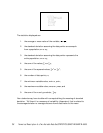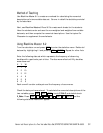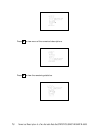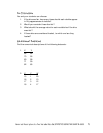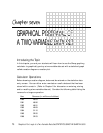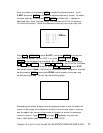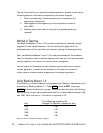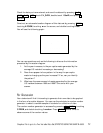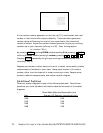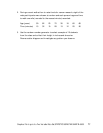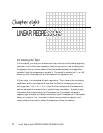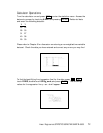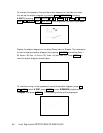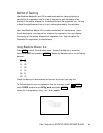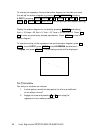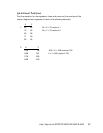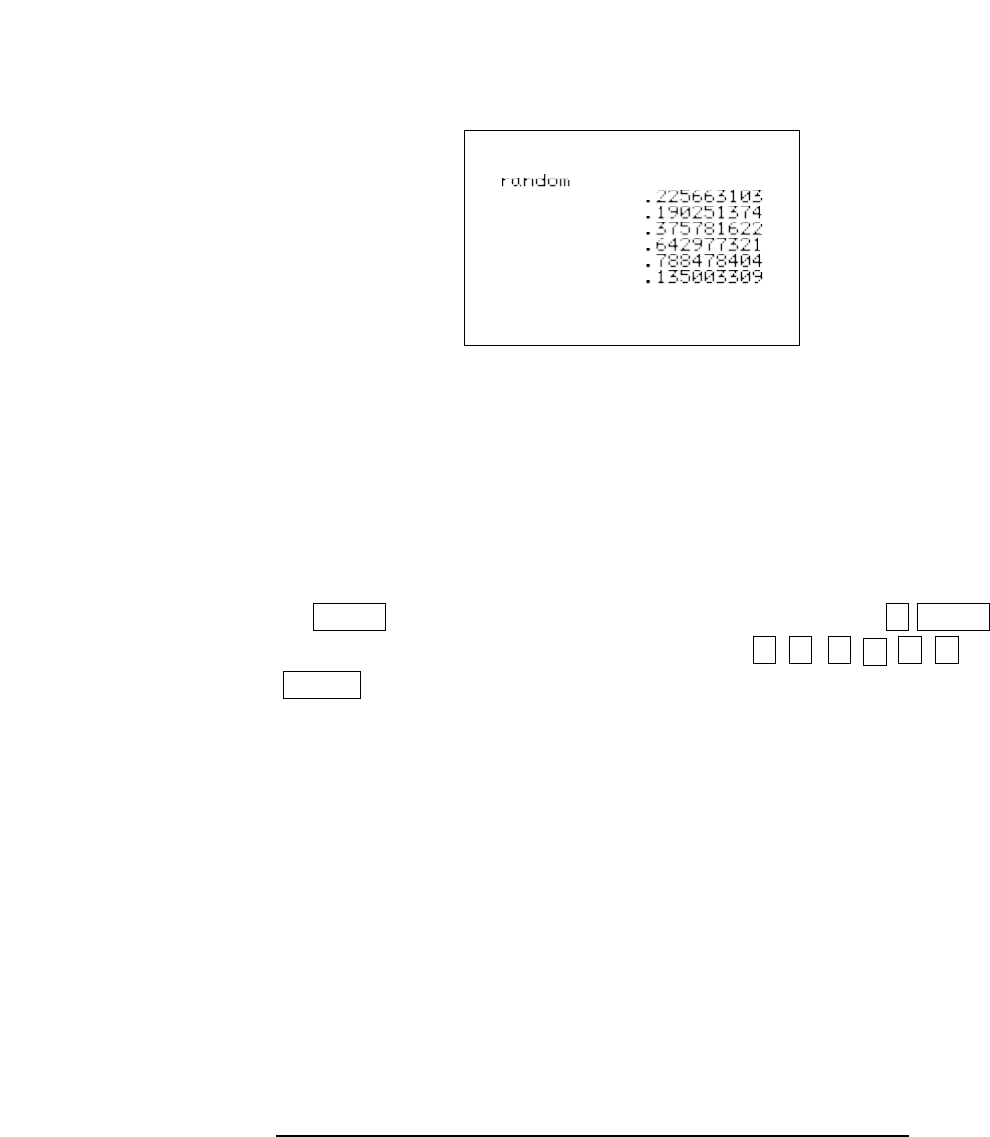
A true random number generator on the interval [0, 1] would select each real
number in that interval with equal probability. These calculator-generated
random values will behave, for most of your experiments, like theoretical
random numbers. Adjust the random number generator to give you counting
numbers up to your class size (let's say it is 30). Enter the expression:
int (random *30)+1
by pressing MATH , touching B NUM, double touching 5 int, pressing ( MATH ,
touching C PROB, double touching 1 random, pressing × 3 0 ) + 1 .
Pressing ENTER repeatedly will give you counting numbers between and
including 1 and 30.
Suppose you decide to collect data on the wrist (x-value) versus ankle (y-value)
measurements of students in your class. Assign each student in the class a
number, either from the class roll or simply counting in class. Sample some
students, take the measurements, and create a scatter diagram.
Additional Problems
Construct scatter diagrams of each of the following data sets. Devise three
questions you could ask about information obtained from each of the scatter
diagrams.
1. Glass Waste Materials Generated by the
Y
ear Average U.S. Resident (pounds per day)
1960 0.20
1970 0.34
1980 0.36
1988 0.28
36 Graphical Portrayal of a Two-Variable Data Set/STATISTICS USING THE SHARP EL-9600



